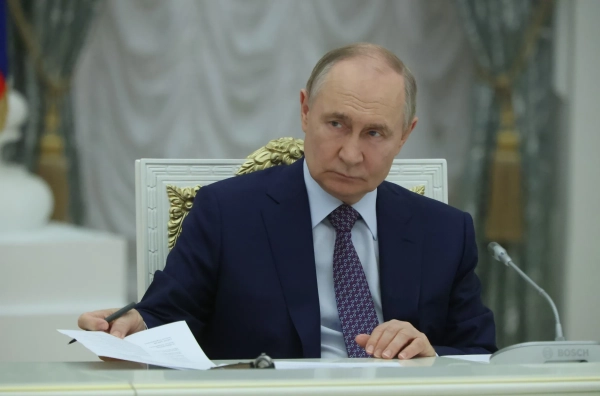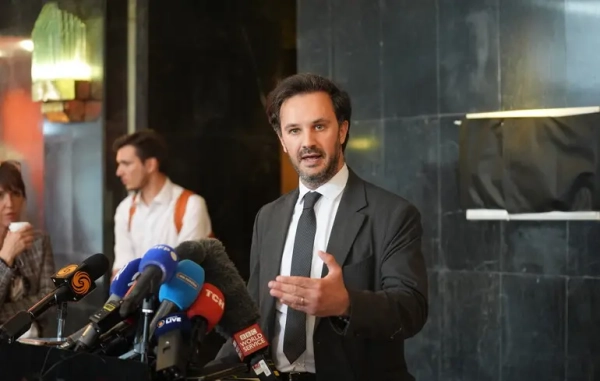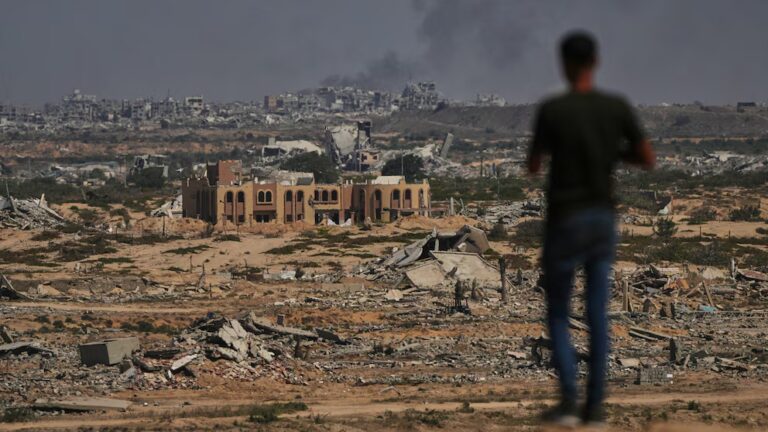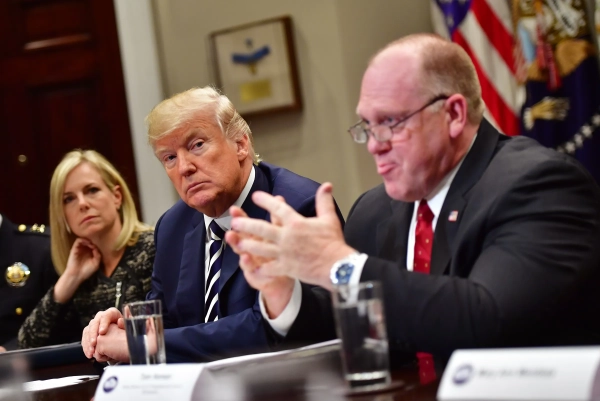“`html 
During the initial phases of the conflict in Ukraine, Gen. Mark Milley, who was then the chairman of the joint chiefs, kept a reference card in his bag detailing what he deemed to be the key priorities regarding the US and NATO approach to the war. As detailed by the Washington Post, these were: Number 1: “Avoid an active conflict between the U.S. military and NATO with Russia.” Number 2: “Confine the war to the geographical borders of Ukraine.” Number 3: “Bolster and preserve NATO cohesion.” Number 4: “Empower Ukraine and provide them with the resources to defend themselves.”
The ranking is revealing. While backing Ukraine has been significant, averting an expansion of the conflict beyond Ukraine’s borders has frequently taken precedence, occasionally leading to frustration among Ukrainian officials. They have sometimes perceived Western nations as overly cautious in supporting actions such as extended-range attacks into Russian territory. Although Milley has departed from American leadership, this viewpoint has continued with the return of President Donald Trump, who has voiced worries that the struggle might escalate into a Third World War.
Consequently, it’s been striking this past week to observe the degree to which NATO leaders seem to have embraced the notion that a NATO-Russia clash — ideally a contained one — might be unavoidable.
The underlying reason is a string of increasingly blatant incursions into NATO’s sovereign airspace. On September 8, a total of 21 Russian drones breached Polish territory, with a portion of them being downed in an unprecedented military action involving Poland, Germany, Italy, and the Netherlands.
Related
- Why might Russia send drones into Poland?
It’s at least conceivable, though somewhat difficult to accept considering their quantity, that these drones drifted into Polish airspace unintentionally while en route to engage targets within Ukraine. Drones have occasionally strayed into and crashed within the boundaries of several NATO member nations adjacent to Ukraine since the war began. The fact that these were unmanned systems also simplified efforts to de-escalate the situation: drones can be shot down without causing any loss of human life, which is one justification for why leaders sometimes take more daring or controversial actions with them. (In a noteworthy incident in 2023, Russian warplanes collided with and brought down a US MQ-9 Reaper drone over the Black Sea.)
The event last Friday, during which three Russian fighter aircraft breached Estonia’s airspace for a duration of 12 minutes and were subsequently intercepted by NATO planes, carried the potential for far more serious consequences. Unlike Poland, Estonia does not share a border with Ukraine; it is situated hundreds of miles distant. Furthermore, in this instance, the aircraft were manned. The Russian authorities have refuted claims of violating Estonian airspace.
On Monday, a succession of drone sightings compelled airports in Copenhagen and Oslo to temporarily cease operations for several hours. On Thursday, drones caused the shutdown of a second Danish airport, which is used for both commercial and military aviation. While Norwegian and Danish authorities did not initially validate widespread assertions — notably those made by Ukrainian President Volodymyr Zelenskyy — that these drones were of Russian origin, Danish officials have since determined that they were connected to a “state actor,” according to Reuters.
These occurrences occupied a central position at the UN General Assembly gathering in New York City this week, with Polish Foreign Minister Radoslaw Sikorski issuing an explicit threat to shoot down any additional aircraft that entered his nation’s airspace.
“If another missile or aircraft enters our space without permission, whether deliberately or accidentally, and is subsequently shot down, with the wreckage landing on NATO territory, refrain from complaining about it here. You have received a prior warning,” he stated, directing his remarks toward the Russian delegation.
“We stand prepared to implement all measures necessary to protect NATO’s skies and territories against Russia’s imperialist bellicosity,” declared UK Foreign Secretary Yvette Cooper.
More unexpectedly, President Donald Trump responded, “Yes, I do,” when a reporter asked on Tuesday whether he considered that NATO nations should shoot down Russian aircraft that enter their territory. “Understood,” Sikorski posted on X in response.
This occurs in the context of this week’s more assertive shift in Trump’s frequently evolving perspectives on the conflict in Ukraine. It also included a post on Truth Social asserting that Ukraine will be capable of reclaiming its complete original territory, contradicting recent declarations from numerous of his own senior government officials.
Such statements were not well-received by Russian officials. In a radio interview broadcast on Thursday, Russia’s ambassador to France cautioned that if a Russian warplane were to be shot down over NATO territory, “it would be an act of war.”
Perhaps these warnings will suffice to dissuade future Russian provocations. Historical precedent suggests they will not. Should Russia persevere, we seem to be moving toward a scenario that was once regarded as a worst-case possibility. The key question is whether it can be successfully contained.
Transmitting signals; evaluating unity
“Putin aims to communicate, in effect saying, ‘To you Lithuanians, to you Poles, if you continue providing aid to Ukraine, the war will extend to your soil. You will experience its effects directly,’” Eitvydas Bajarūnas, a seasoned Lithuanian diplomat and former ambassador to Russia, communicated to Vox.
The aerial breaches have led to renewed appeals for elevated NATO funding in both aerial defense and drone identification technologies. They have likewise brought into sharper focus the way Russia’s economical, easily replaced kamikaze drones may offer a calculated edge. An Estonian authority characterized them to the Associated Press as a “sure-win lottery ticket” — either they find their intended destination or the opposing force must utilize a more costly missile to eliminate them. European diplomats are setting up a meeting on Friday to deliberate over allocated resources in what is called a “drone wall,” a complex arrangement composed of sensors, cyber warfare technologies, and weaponry to forestall additional violations.
In the short run, the countries aligned with NATO’s eastern boundary are bracing for amplified Russian provocations. To name just one instance, Lithuania’s legislature has granted official authorization to its military forces to eliminate any drones encroaching upon the nation’s airspace.
“If European powers repeatedly notify Russia about airspace infringements, and these warnings continuously go unheeded, then what message are we truly sending to the world?”
Bajarūnas, who now holds a senior fellowship at the Center for European Policy Analysis, did concede that an infringement by manned aircraft, such as what happened close by in Estonia the past week, would lead to sterner decisions for NATO leaders. “There will be no automatic reaction,” he stated, regarding the question of whether to intercept an aircraft. “Each case will be thoughtfully assessed and discussed among our allies to the fullest degree possible; however, swift decisions are sometimes required.”
The Kremlin might also be striving to assess whether its NATO peers are fully in agreement. States in Western Europe have typically been labeled as less adversarial towards Russia when compared to nations like Poland and the Baltic States. This difference stems from these countries’ complicated historical ties to Russia and the Soviet Union. In a CNN news report from Tuesday, it was revealed that NATO government representatives were split over whether to impose an approach that confronts future breaches, inclusive of manned aircraft, through force. Germany, along with several nations in southern Europe, opposed this idea. They reached consensus that individual nations should pursue actions they personally deem essential.
The greater uncertainty perhaps lies in whether Washington is aligned, according to Liana Fix, a senior fellow for Europe at the Council on Foreign Relations. Even though Trump, at least for the moment, is advocating Eastern Europe’s prerogative to safeguard its airspace, “I am not sure this mirrors the opinions of the vice presidency or the Pentagon, who intend to avert entering into conflict with Russia, and have regarded the Baltic countries with reservation due to this,” Fix commented.
Indeed, Gideon Rachman of the Financial Times stated that Trump administration officers have expressed complaints in relation to the “Estonization” of European defense strategy, alluding to the former Estonian Prime Minister, Kaja Kallas, who is now the EU’s foreign policy chief. Certain influential figures in Washington view the Baltic countries as dangerously “ideological” in their opposition to Putin. It’s said that during this week’s conference, Alexus Grynkewich, the leading US general for Europe, upset some attendees when he proposed that the Estonian incursion might have been unintentional.
Not the apocalypse?
Tensions are escalating as a conflict lasting years menaces to expand beyond recognized international demarcations. Russia’s armed forces are being accused of perpetrating war atrocities, targeting civilians, and reducing cities to debris with bombings. While this intense aerial warfare proceeds, Russian warplanes repeatedly — if only for brief intervals — intrude into NATO airspace, prompting fears that an armed clash may break out involving Russia and the Western military coalition, both of which possess thousands of nuclear arms. Following repeated incursions, a Russian fighter aircraft that overlooked warnings from the ground is shot down over NATO territory — one of the two aviators is fatally wounded. #WorldWar3 is a trending subject on Twitter.
The setting is 2015, and the Russian warplane was shot down while flying over Turkey, a NATO member state, following strikes on rebel emplacements in Syria in support of Bashar al-Assad’s governance. World War III, it’s adequate to say, did not begin. In 2016, Turkey and Russia re-established ties once Turkey’s president, Recep Tayyip Erdoğan, issued an apology for the incident.
The 2015 historical event is likely being weighed by NATO policymakers as they examine a response to the recent airspace infringements. There seems to be an intensifying understanding that the potential risks in enabling these continued provocations outweigh those of reacting to them. The Russian regime has, in the past, cautioned NATO countries on the outlook for total war, only to not execute these threats.
“If European powers repeatedly notify Russia about airspace infringements, and these warnings continuously go unheeded, then what message are we truly sending to the world?” Rachel Rizzo, a senior fellow and NATO expert at the Atlantic Council, communicated to Vox, summarizing this emerging frame of thought.
Nevertheless, it warrants noting that the prolonged attempts carried out by NATO governments and militaries to confine this ongoing war within Ukraine’s borders seem to be already unsuccessful. They may be hoping that a conclusive show of strength — possibly extending to NATO intercepting a Russian warplane or causing the death of a pilot — stands as a necessary countermeasure to Russia’s newest escalations. However, that action doesn’t mean the heightening of tensions will cease.
Update, September 25, 5:50 pm ET: This story was initially released on September 25 and has undergone updates to include more declarations and formal records.
“`
Source: vox.com






